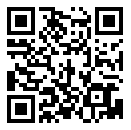 Something I learned about recently when going through Amazon books and buying Kindle editions of books on e-learning and instructional design was gamestorming. This concept immediately intrigued me. I have always liked brainstorming both personally and professionally but extending traditional brainstorming activities with game design takes it to a whole new level. The book I bought is called Gamestorming: A Playbook for Innovators, Rulebreakers, and Changemakers by Dave Gray, Sunni Brown, and James Macanufo (2010).
Something I learned about recently when going through Amazon books and buying Kindle editions of books on e-learning and instructional design was gamestorming. This concept immediately intrigued me. I have always liked brainstorming both personally and professionally but extending traditional brainstorming activities with game design takes it to a whole new level. The book I bought is called Gamestorming: A Playbook for Innovators, Rulebreakers, and Changemakers by Dave Gray, Sunni Brown, and James Macanufo (2010).
What is gamestorming?
I looked it up on Wikipedia, yes, that’s right, the source of all knowledge 🙂 and gamestorming was originally designed for the business world but the potential for it to be used in education is definitely there. According to Wikipedia, gamestorming is about “facilitating innovation through asking questions, structuring large diagrams, sketching ideas, fusing words and pictures into visual language, and most importantly, improvising to choose and lead a suitable game or invent a new one” (Gamestorming on Wikipedia). The book details the 10 essentials for gamestorming before going through gamestorming skills and then many different gamestorming games. There is also a Gamestorming Card Deck app uses images to demonstrate how to play the games and is an easy and accessible way to carry around the games as a tool for implementation at anytime, anywhere.
Some gamestorming activities for education
The Affinity map activity is based on the affinity diagram, which helps learners discover patterns in information. Learners will be given a stimulus question and then they use sticky notes to respond to the question in as few words as possible. Then these sticky notes are sorted and categorised. The key is not to spend too much time thinking about it but it doesn’t seem much like a game at all so how could you use this and make it more fun with some game elements? You could turn this kind of activity into a mission and have learners design badges to be the categories or get certain badges for different stages of the activity perhaps. Post-up is also a similar activity to this in the gamestorming book.
The 3-12-3 Brainstorm activity is an activity where the numbers indicate time. The activity is about generating observations, combining observations and categorising into concepts and then presenting the concepts back to a larger group. Time restrictions can be a great motivator and many games often have time limits associated, as the book also states, it forces learners to be more spontaneous and quick in their decision-making. This kind of brainstorming activity is also kind of like a Jigsaw activity. I would use this kind of activity in any number of ways within the classroom. You could use it to have learners reflect on their observations of a stimulus resource of some type, generating immediate observations first and then categorising them and presenting them to others as a summary of observations. I am originally a music teacher and I could see the value in using this to have my students do a listening activity.
Graphic Jam is a challenge that again uses sticky notes but the purpose of this activity is to try to visual concepts that are not normally easy to visualise. Learners are asked to write on the sticky notes, concepts which they struggle to visualise and then the teacher collects all of the sticky notes and then randomly draws one for all learners to draw it and then post their new sticky notes around the word. I have a very visual memory, almost completely photographic many times, and I use this to learn new concepts and information but if struggle to visualise something, I do struggle to actually learn it. This kind of activity would be great in English for visualising key areas of a text and maybe even understanding types of words such as verbs, adjectives and even onomatopoeia.
I think there is a lot more elements of gaming and play that could be integrated into these gamestorming activities and the others like it in the book but will have to experiment with them a little more. However, how do you do these kinds of activities online? That is another important question too. Forums could be used and definitely tools such as Wallwisher, but also using virtual worlds and actual gaming platforms would work too. The possibilities are endless. It’s all about being creative I think. Will continue to ponder…
